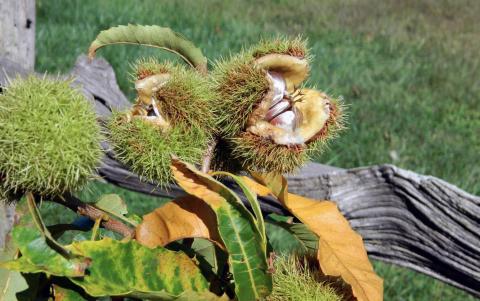
By Jim Melvin
At the beginning of the 20th century, an insidious fungus – imported from Asia and destructive to American chestnut trees – began an airborne march across 200 million acres of eastern woodlands. From Maine to Florida, an estimated 4 billion chestnut trees succumbed to the infestation, notoriously known as the chestnut blight. By the 1940s, the towering behemoths were decimated – and an essential component of our ecosystem was eliminated.
The blight followed a much earlier and less-publicized devastation, when a form of root rot that thrived in warmer climates killed many American chestnut trees in the Piedmont region of the Carolinas in the mid-1800s.
The American Chestnut Foundation – in partnership with a variety of scientific institutions that includes Clemson University – has conducted decades-long research aimed at restoring the majestic trees in the wild. Significant gains have been made. But the breeding of American-type chestnuts that are consistently resistant to attacks by blight and root rot is still a work in progress.
Scientists are confident that an ultimate victory in this frustratingly protracted battle will be achieved in the foreseeable future. Traditional methods of plant breeding have been recently joined by high-tech genetic mapping techniques that are aimed at revealing the genes that control traits such as blight and root rot resistance. The chestnut’s genome is immense, containing about 800 million base pairs. Researchers at Clemson are zeroing in on the specific genes – hidden within a morass of others – that will lead to further breakthroughs.

